Enabling En Route Communications Aboard Large Transport Aircraft
The ability to communicate en route directly with ground elements during an airborne theater insertion has taken a giant leap forward with a communications system boarding a C-17 Globemaster III. A long-distance deployment across the vast Asia-Pacific region has opened the door to en route command and control over secure or unsecure links.
Last year, as part of the U.S. Pacific Command’s Talisman Saber 2013 (TS-13) exercise, four members of the Joint Communications Support Element’s (JCSE) 4th Joint Communications Squadron (4JCS) boarded a C-17 for a non-stop, 14-hour flight from Joint Base Elmendorf-Richardson, Alaska, to the Royal Australian Air Force Base Amberley. The aircraft was filled with paratroopers from the U.S. Army’s 4th Airborne Brigade Combat Team, 25th Infantry Division (4-25), which was en route to a forcible entry assault mission supporting a fictional scenario designed for TS-13.
While over the Pacific Ocean, JCSE members enabled the 4-25 commander to communicate directly with the combined land forces component commander (CLFCC) on the ground in Australia via secure and unsecure networks and phones. Both the airborne and ground teams were able to send and receive operational updates, intelligence reports and weather updates pertinent to the impending forcible entry mission.
The 4JCS sustained uninterrupted network services throughout the duration of the flight, even in the midst of a mid-air refueling, demonstrating the reliability of the communications system. The critical lines of communication provided by 4JCS enabled an accurate, real-time portrayal of the situation on the ground, allowing the 4-25 paratroopers to adjust the execution of their mission to meet the changing requirements of the CLFCC.
This represented the first airborne, en route mission of this distance on a C-17 employing the Joint Airborne Communications Center/Command Post, or JACC/CP. Additionally, this training event validated a critical and much-needed capability that will support the current defense strategy and the future operational environment.
The JACC/CP provides en route command and control (C2) capabilities enabling senior leaders to execute planning and operations while in the air. Through a combination of satellites, ground-based radios and associated waveforms, the JACC/CP can provide classified and unclassified network access to include commercial Internet and phone. In addition, the JACC/CP is equipped with common applications critical to a majority of operations—Blue Force Tracker, a Global Positioning System (GPS) unit that provides location information of friendly forces; and FalconView, a mapping software that displays various types of maps and geographically referenced overlays. The JACC/CP allows en route troops to communicate with forces on the ground, make critical decisions and maintain complete situational awareness of operations on the battlefield. Essentially, the JACC/CP offers a capability similar to the Wi-Fi offered on board a commercial aircraft.
As with the JCSE’s other communication packages, the JACC/CP is modular in nature, meaning the equipment is scalable to the mission. Depending on the customer’s requirements, the JACC/CP can be employed as a small stand-alone kit or can be scaled up to a larger system. The stand-alone kit provides all the core data services of the full JACC/CP system with an extremely small footprint consisting of just two transit cases. Similarly, the larger system includes four pallets, complete with workstations and seating for up to 16 users, if space on the aircraft allows. It can be rolled on and off the aircraft, which offers a quick initial setup.
Forcible entry operations can happen quickly. At times, mere hours exist between notification and the actual deployment of forces. For these quick deployments a mechanism called the Global Response Force (GRF) exists. The GRF is composed of a select group of capabilities across the Defense Department that can respond to global crisis or contingency operations with little or no notice.
In addition to organizations that offer expertise in airborne forcible entry operations, the Joint Enabling Capabilities Command (JECC), headquartered in Norfolk, Virginia, also provides unique capabilities to joint force commanders under the GRF. The JCSE is one of three subordinate joint commands under the JECC that contribute rapidly deployable skill sets and capabilities to the GRF. The JECC’s Joint Planning Support Element and the Joint Public Affairs Support Element also provide rapidly deployable joint planning and public affairs expertise, respectively.
Because a forcible entry operation often requires rapid deployment, it leaves minimal time for units to plan for the mission before arriving in theater. Additionally, the situation on the ground could change drastically from the time forces deploy to the time they arrive at their destination. These forcible entry troops must have an accurate account of the operational landscape as they are approaching the battlespace, and they must be adequately informed of any changes to the mission since their initial deployment.
The JACC/CP is just one of the various JCSE communication packages that can be requested for these short-notice GRF deployments, and it includes a dedicated alert-postured force en route team of four members. The JCSE’s JACC/CP not only meets the requirements of the GRF but also enables forcible entry operations by offering both a rapidly deployable package and a reliable, robust en route communications capability.
Other en route communication packages, such as the Joint Surveillance Target Attack Radar System and the Secure En Route Communications Package-Improved, provide similar capabilities to the JACC/CP. However, these systems are not as scalable to mission requirements. A key advantage of the JACC/CP is its versatility and flexibility. Both the small and large designs are plug-and-play, meaning they are preconfigured for quick use and do not require any additional lead time to modify pieces and parts for unique missions. When the JCSE receives a call for support, the JACC/CP and its team of communications experts arrive within hours ready to begin providing services immediately.
Another benefit of the JACC/CP is the continual monitoring and tracking of the system’s communications services provided by the JCSE’s newly upgraded Joint Network Operations Center (JNOC). The JNOC operates around the clock, year round, to provide assured network availability, information protection and delivery to every communication package employed by the JCSE worldwide. The JNOC is the JCSE’s center of gravity and enhances the command’s ability to mitigate loss of services across networks—something that would be extremely detrimental to a team during an en route mission.
The JACC/CP has been certified for use on a C-130 since its inception. However, the JCSE recently received certification on the larger C-17 airframe. This two-year certification process included modernizing the JACC/CP equipment; performing numerous in-house verifications to ensure compatibility; and successfully completing a comprehensive certification test conducted by the Air Force Research Laboratory to validate interoperability with the C-17’s avionics systems.
The JCSE J-5 directorate began work to improve the JACC/CP’s design in 2010. The key element was the introduction of radio frequency filters, which ensured that the JACC/CP’s radio frequencies would not interfere with frequencies being used in the cockpit of the C-17. Once this critical component was identified and incorporated, the J-5 engineered a functional design and initiated preliminary evaluations of radio interoperability and systems checks over a six-month period, prior to the final C-17 certification test.
In August 2012, the Air Force Research Laboratory contracted a group of civilian technicians to verify the JACC/CP’s interoperability on the C-17 platform. Certifying officials used a spectrum analyzer tool to record and test the frequencies emitted from the multiple radios transmitting simultaneously while the JACC/CP was in operation. Additionally, the certification also included “tow testing,” in which the C-17 aircraft was moved into various positions while all frequencies were validated. This type of testing was conducted to mitigate any risks associated with the JACC/CP’s operation causing possible conflicts with, or power failure of, the aircraft’s GPS.
The comprehensive certification was a success and final certification approval from the Air Force C-17 System Program Office was granted in January 2013. Since that time, the JCSE has been vigorously testing and further verifying the compatibility of the JACC/CP on the C-17.
The C-17 certification greatly expands the JCSE’s ability to support combatant commanders and joint force commanders with an airborne C2 capability, and it increases the JCSE’s operational reach. Planners no longer will have to account for the employment of a C-130 in a C-17-supported mission, especially for forcible entry operations in which C-17s are the preferred airframe. When conducting airborne operations on the C-17, both ground troops (paratroopers) and battle staff can occupy the aircraft simultaneously. This saves time and money for units conducting a mission, because the aircraft lift requirement goes down.
Unlike the C-130, the C-17 has all the needed antennas installed. This effectively cuts down the setup and installation time to become airborne and conduct operations. Additionally, the C-17 allows for en route communications on both the initial and return flights because of the airframe’s ability to cover extended distances globally with its faster speed and greater fuel capacity.
A new version of the JACC/CP currently is being certified for use on both C-130 and C-17 aircraft and includes improved technology and equipment. The JCSE J-5 also continues to pursue increased bandwidth availability in the air through use of satellite terminals such as the ViaSat Modem/KuSS-terminal, which can provide up to 2 to 4 megabytes per second. This level of bandwidth enables live video streaming for conducting standard video teleconferencing with joint force commanders as well as intelligence, surveillance and reconnaissance feeds such as the Remotely Operated Video Enhanced Receiver, or ROVER.
The JCSE’s 4JCS team continues to participate in periodic multilateral training exercises such as TS-13 and the Joint Operational Access Exercise to validate the JACC/CPs en route capabilities. A team recently provided support to Cobra Gold 2014. In addition to looking for any opportunities to fly the JACC/CP on available C-17 aircraft both at home from MacDill Air Force Base, Florida, and during geographic combatant command exercises such as TS-13, the JCSE also is actively educating the joint community on the advantages of en route communications on this new platform and encouraging planners to incorporate this system into their future plans, operations and exercises.
Lt. Col. Jan Norris, USA, is the Joint Communications Support Element 4th Joint Communications Squadron commander. Whitney Katz is a lead communications specialist with the J-33 Current Operations, Joint Enabling Capabilities Command.
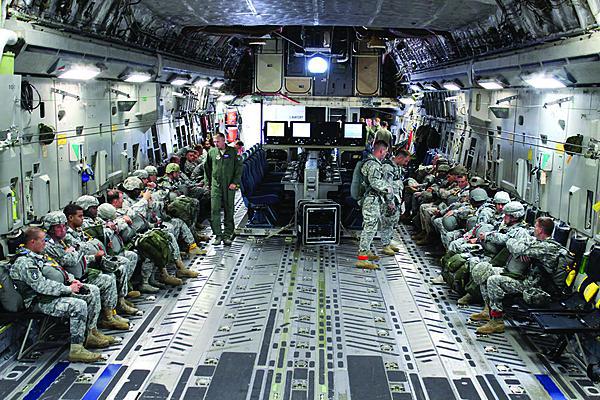
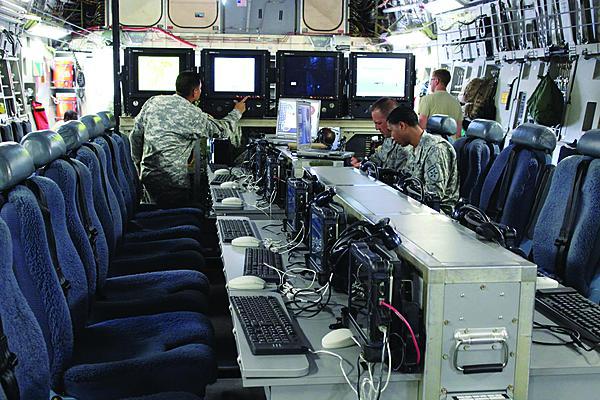
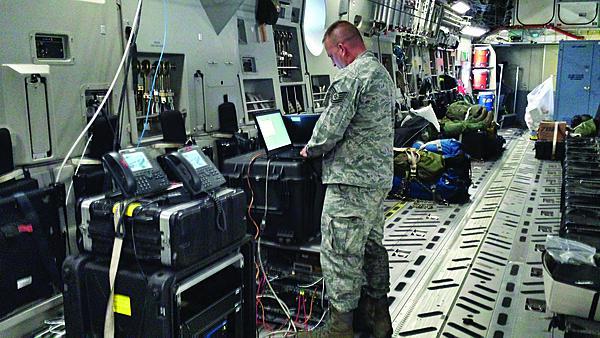

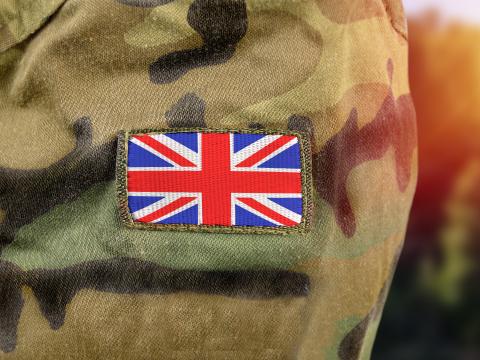
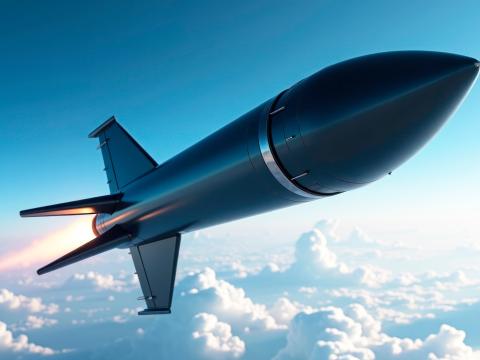
Comment
Nice to see this unit
Nice to see this unit upgraded and fully operational. Served in Jackpot during the 80’s.
Greg
Comments